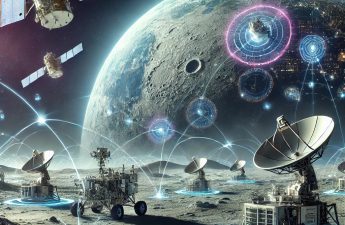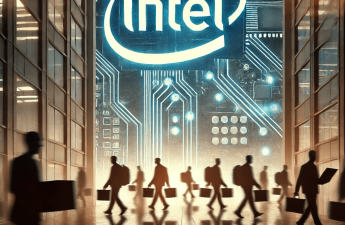Entomology, the scientific study of insects, has long relied on traditional methods of research like manual fieldwork, taxonomy, and laboratory experiments. However, as the volume of data generated from studying the world’s millions of insect species grows, so does the complexity of the questions that entomologists seek to answer.
These questions range from understanding the role of insects in ecosystems to managing pest populations, combating insect-borne diseases, and preserving biodiversity.
In recent years, the integration of Artificial Intelligence (AI) into various scientific disciplines has brought about revolutionary changes in how research is conducted. Entomology is no exception. With AI-powered technologies like machine learning, computer vision, robotics, and predictive modeling, entomologists now have unprecedented tools to enhance their research efficiency and precision.
This article explores the profound impact of AI on entomology and how shifting toward AI-powered methodologies could reshape the future of insect science.
1. AI-Powered Image Recognition for Species Identification
One of the most significant challenges in entomology is species identification. Traditional taxonomy requires extensive expertise, time, and sometimes destructive sampling of insects. With over a million described insect species and countless more yet to be classified, the task of accurately identifying insects is daunting. AI-driven **computer vision** and **machine learning algorithms** offer a solution to this problem.
Using large datasets of insect images, AI models can be trained to recognize subtle morphological differences between species, even at the microscopic level. These models can process images much faster and with higher accuracy than human researchers, reducing the margin for error. Apps and platforms powered by AI have already emerged, allowing researchers and even citizen scientists to upload insect photos and receive near-instant species identification. These tools democratize entomology, allowing for more inclusive participation in insect research and conservation efforts.
Moreover, AI-powered identification systems can handle the vast number of specimens collected in large-scale biodiversity surveys. This automation allows entomologists to spend more time analyzing data and understanding ecological relationships rather than manually sorting and identifying specimens.
2. Automating Field Data Collection with AI and Robotics
Fieldwork is a cornerstone of entomology. Whether studying pollinators in agriculture or tracking the spread of invasive species, entomologists often rely on time-consuming manual data collection methods, such as setting traps or conducting direct observations. AI, coupled with **robotics**, is transforming this aspect of entomological research by enabling automated and precise data collection.
For example, AI-powered drones equipped with cameras and sensors can be used to monitor insect populations in remote or hard-to-reach areas. These drones can capture images, track movement patterns, and even collect environmental data like temperature and humidity, which are critical for understanding insect behavior. This data can then be processed using machine learning algorithms to detect trends or identify specific species.
In agricultural settings, **robotic systems** powered by AI can monitor crop fields for pest infestations, detect early warning signs of outbreaks, and deploy targeted interventions such as pesticide application. This **precision agriculture** approach not only reduces labor costs but also minimizes the use of harmful chemicals, promoting sustainable farming practices.
AI can also be applied to automated light traps and camera traps that capture images of nocturnal insects. These systems can automatically identify and count insect species in real-time, providing researchers with continuous and comprehensive datasets that were previously unattainable through manual methods.
3. Predictive Modeling and Pest Management
Insects are vital components of ecosystems, but they can also pose significant challenges in the form of pests that threaten agriculture, human health, and infrastructure. Effective pest management has always been a delicate balance between minimizing the impact of harmful insect populations while preserving beneficial species. AI offers powerful tools for predictive modeling, which can help entomologists and pest control professionals make more informed decisions.
By analyzing vast datasets on insect behavior, climate patterns, and environmental factors, AI-driven models can predict the timing and severity of pest outbreaks. For instance, in agriculture, AI can help forecast the emergence of pest populations based on historical data, weather conditions, and crop growth stages. Farmers can use this information to implement timely and targeted pest control measures, reducing crop damage and minimizing pesticide use.
AI can also play a crucial role in predicting the spread of insect-borne diseases, such as malaria, dengue, and Zika, which are transmitted by mosquitoes. By integrating data on mosquito populations, climate change, and human mobility, AI models can anticipate disease outbreaks and assist public health authorities in deploying resources more effectively.
4. AI for Insect Behavior and Ecology Studies
Understanding insect behavior and ecology is central to many fields of entomology, from conservation to pest control. AI can process large volumes of data from behavioral studies, enabling entomologists to gain new insights into how insects interact with their environments and each other.
For example, **machine learning algorithms** can be used to analyze video footage of insect behavior, identifying specific actions such as feeding, mating, or nest-building. These algorithms can detect patterns and correlations that may be overlooked by human observers, allowing for more nuanced and detailed behavioral studies.
In ecology, AI-powered models can simulate complex ecosystems and predict how insect populations will respond to changes in their environment, such as habitat loss or climate change. These simulations can help entomologists forecast the long-term effects of environmental shifts on biodiversity and develop conservation strategies to protect endangered species.
5. Conservation and Biodiversity Monitoring
The world’s insect populations are in decline, with significant consequences for ecosystems and human well-being. AI can help address this crisis by improving the efficiency and accuracy of biodiversity monitoring programs. In particular, AI-powered platforms can analyze large datasets collected through field surveys, camera traps, or citizen science initiatives to detect trends in insect populations over time.
For example, machine learning models can analyze acoustic data to monitor the presence of specific insect species, such as bees or crickets, in a given area. This non-invasive method allows researchers to track species richness and abundance without disturbing the insects or their habitats. These insights are critical for developing effective conservation strategies and assessing the impact of environmental policies.
6. AI and Citizen Science
One of the most exciting developments in entomology is the integration of AI into **citizen science** platforms. Apps and websites that allow the public to contribute insect observations and images have become increasingly popular, but sorting through these vast datasets has posed a challenge for researchers. AI is helping to overcome this barrier by automatically identifying species from images submitted by citizen scientists, ensuring that the data is accurate and useful for research.
Moreover, AI-driven platforms can provide real-time feedback to citizen scientists, encouraging greater participation and engagement in insect research. This democratization of entomology not only increases the volume of data available to researchers but also raises public awareness of the importance of insects in ecosystems and conservation efforts.
7. Challenges and Ethical Considerations
While the shift toward AI in entomology offers numerous benefits, it also presents challenges and ethical considerations. For example, reliance on AI algorithms for species identification raises questions about data privacy, accuracy, and bias. If the training datasets used for AI models are incomplete or biased, the models may produce incorrect or misleading results. Ensuring transparency, accuracy, and inclusivity in AI-powered research is essential to mitigate these risks.
Moreover, as AI automates many aspects of data collection and analysis, there is a risk that traditional fieldwork skills and taxonomic expertise could be devalued. It is crucial for the next generation of entomologists to receive training in both AI and traditional methods to maintain a balance between technological innovation and hands-on expertise.
Conclusion
The integration of AI into entomology is revolutionizing the field, offering new tools and insights that were previously unimaginable. From species identification to behavioral analysis, pest management, and conservation, AI is enabling entomologists to work faster, more accurately, and on a larger scale than ever before. As AI technology continues to advance, its role in entomology will only expand, opening up new possibilities for understanding and protecting the world’s insect biodiversity.
By embracing the potential of AI, entomologists can tackle some of the most pressing challenges in insect science and ensure that insects, which play such vital roles in ecosystems, continue to thrive in a rapidly changing world.
Thank you for reading. We hope this gives you a good understanding. Explore our Technology News blogs for more news related to the Technology front. AdvanceDataScience.Com has the latest in what matters in technology daily.



